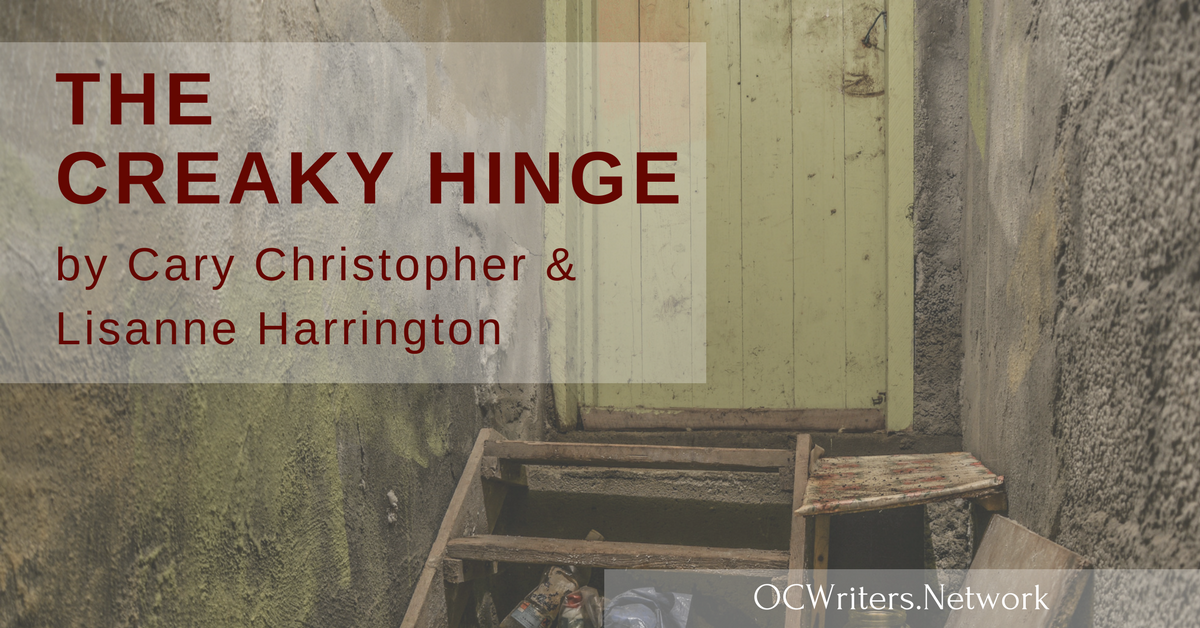by Cary Christopher and Lisanne Harrington
So this month’s theme is resurrection. Who better to write about it than two people who love stories about things coming back from the dead? Am I right?
The truth is, it’s a topic that almost any author can relate to on some level. We all have ideas that seem good when they first hit us, but then as we start to flesh them out something takes a turn. As active writers, we plant a lot of seeds in the creative soil and not all of them ripen to be something sweet. Sometimes, we end up with an ugly weed or something that smells like that corpse flower that blooms once every decade.
However, we propose you put on your lab coat and grab some reanimation fluid (think Dr. Herbert West and if you don’t know who that is, start reading Lovecraft now!). It’s time to release your inner Mad Scientist!
Build Yourself a Morgue
The first step is to set up a place where you can put those failed experiments. It can be a folder on your computer. It can be a physical file. The point is to hold on to them. Cary has a subfolder simply called “Ideas.” Anything that doesn’t quite ignite once he puts a match to that initial fuse goes in that folder. Currently it has twelve projects in it (10 fiction and 2 nonfiction).
Now, he’ll be the first to tell you that some of these ideas are not great. In fact, some are downright bad. Why doesn’t he throw them away? Well, did you even read last month’s column? It’s all about growth, people! A bad idea or a creative misfire is sometimes no more than a tweak or two away from becoming something good. The more you grow as a writer, the better you’ll be able to recognize what those failed experiments need.
Keep All of the Pieces
Cary uses Scrivener as a writing tool. One of the benefits of that program is the ability to create subfolders within a project you’re working on. As he’s writing, if he ends up finding a part of the story that doesn’t quite work, he puts it in a subfolder called “Unused Pieces.”
Now, you may think that’s the kind of thing a hoarder would do, but he’s not being a pack rat. He’s just filing it away in case he needs to resurrect it at another point in the story. Most of the time, it goes into the incinerator after the final draft is completed, but every now and then those pieces become something else entirely. In fact, Cary took two unused chapters from his last book and turned them into short stories that then link back to the novel for those who want to read more.
It’s Alive!! My God it’s Alive!!!
I know what you’re thinking. This sounds like something where you’ll look back in five years and be more embarrassed about what you wrote than intrigued by it. We’re not going to lie. That will also probably be true. Just remember to keep an open mind.
One of the more famous examples of a successful “resurrection” is Stephen King’s Carrie. King submitted Carrie to 30-some-odd publishers before dumping it in the trashcan. His wife, Tabitha, “resurrected” it by taking it out of the trash and helping him to understand the female perspective of his main character better. It allowed King to believably explore how Carrie felt about her classmates, her home life, and herself. Tabitha urged him to rewrite it and submit it again. The rest, as they say, is history.
Or is it? After Carrie became successful, King looked back on some of his other “failures” and resurrected them as well. Those books and stories include Rage, The Long Walk, and Blaze, all of which he’d had no luck with before.
A Rose by Any Other Name Still Has Thorns
Of course, King decided to resurrect them under a pen name. Sometimes it can be that simple. Other times, it takes a great effort. In our last column on growth, Lisanne talked about a short story that she resurrected from her early days as a writer. She expanded on her original idea (which was a bit on the flimsy side), and has submitted it to a contest.
Fingers crossed…
So how can you tell if something is worth resurrecting? Ask yourself these questions: Has it stuck with you all this time? Have you found yourself revisiting it over and over again? Does it still appeal to you, sound like something you’re interested in working on again?
These are all great ways to help make a decision. But for Lisanne, if one or more of the characters keep popping up in her dreams, like that killer clown hiding under the bed, then that’s the one that gets resurrected. Her stories are all character-driven; since they’re the ones driving the bus, they more or less make the decision for her.
One Final Example
Here’s one final example of how you need to train yourself in the art of the mad scientist. If you are a horror fan, you have more than likely heard of the movie director, Eli Roth. He’s written Cabin Fever, Hostel, Hostel 2, The Green Inferno, and many others. In an interview on the ID10T podcast, he was asked how many things he’s “got going”. His answer?
Hundreds.
How can that be? Roth “writes” constantly, even when he’s not putting pen to paper. He riffs conversations to himself in the car, imagines one hundred different ways to kill the guy who just cut him off in the grocery store parking lot, and constantly pushes himself away from distractions like social media to focus on jotting down these ideas. In his case, he literally has a large white board with single sentence ideas on it and he really does have hundreds. Some are films, others are television shows and some are even books. The point is that no matter the idea, he jots it down and keeps it. From that white board, he has created folders on his phone and computer and as ideas come he’ll jot them down. Nothing is tossed.
Eventually, when he finishes whatever project he’s currently working on, he goes to the board and he asks himself which thing he wants to go back to and resurrect. Then he picks one, focuses on that and finishes. This is a perfect example of a true mad scientist at work.
So whether you keep a folder, jot things on a white board or even wait for your characters to speak to you, we suggest you hold on to those “failures”. Peruse them periodically, pull out the idea or story that calls to you the loudest, prune the thorns (and there will be many), and get to resurrecting!
Mad Scientists unite!
***
Cary Christopher was born and raised in Florida and Georgia but has called Southern California home now for almost 20 years. He’s written extensively about music, movies and pop culture online and for various publications around SoCal. Now he primarily writes for his blog (www.carychristopher.com). His new novel The Wash is available on Amazon.
Link to my Amazon Authors Page: https://www.amazon.com/Cary-Christopher/e/B076FD8MJ3
 After sixteen years as a paralegal, I staged a coup and left the straight-laced corporate world behind forever. I now pander to my muse, a sarcastic little so-and-so who delights in getting the voices in my head to either all speak at once in a cacophony of noise or to remain completely silent. Only copious amounts of Diet Cherry Dr. Peppers and hamburgers will ensure their complicity in filling my head with stories of serial killers, werewolves, and the things that live under your bed.
After sixteen years as a paralegal, I staged a coup and left the straight-laced corporate world behind forever. I now pander to my muse, a sarcastic little so-and-so who delights in getting the voices in my head to either all speak at once in a cacophony of noise or to remain completely silent. Only copious amounts of Diet Cherry Dr. Peppers and hamburgers will ensure their complicity in filling my head with stories of serial killers, werewolves, and the things that live under your bed.
I live in SoCal, in the small town I fashioned Moonspell’s Wolf Creek after, with my beloved husband and persistently rowdy, always-has-to-have-the-last-word Miniature Pinscher, Fiona.
*O.C. Writers is a participant in the Amazon Services LLC Associates Program, an affiliate advertising program designed to provide a means for us to earn fees by linking to Amazon.com and affiliated sites. By clicking on the book links anywhere on this site, we earn a small commission from your purchase.






The questions you suggested for asking yourself whether or not a piece is worth resurrecting were most helpful: “Has it stuck with you all this time? Have you found yourself revisiting it over and over again?” Very helpful!